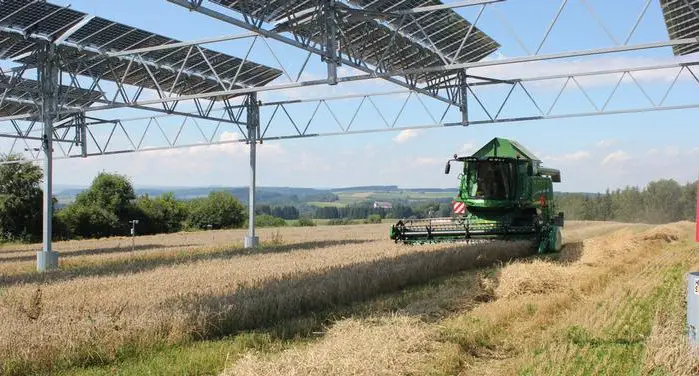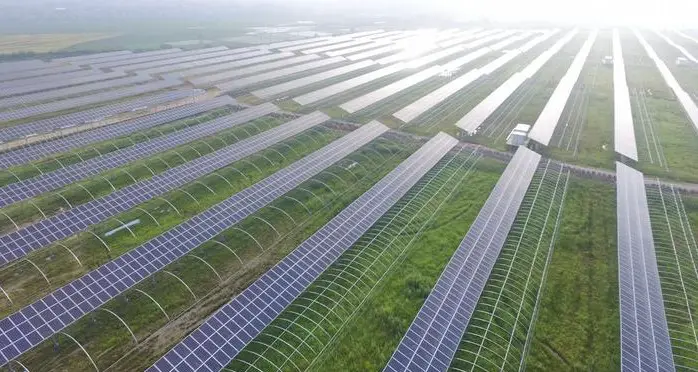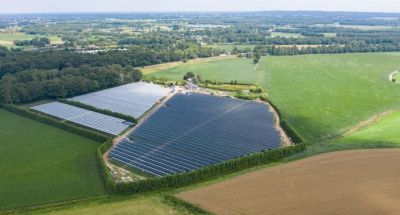In the fields, solar panels produce electricity, assisting both farmers and climate protection.
power above, berries below
Naturally, the modules also supply electricity. With 750 kilowatts of power, the system can produce 640,000 kilowatt hours of electricity annually, which is enough to power 160 homes.
Everyone benefits, thus it’s a win-win situation. It implies that green energy can be produced locally and decentralized where energy is used.
Soft fruits, such as apples, cherries, and potatoes, as well as vegetables like tomatoes and cucumbers, grow well in Germany using this kind of gardening. Different plants and module designs might be more appropriate in other parts of the world.

HUGE POTENTIAL WORLDWISE
Max Trommsdorff, an agrivoltaics specialist at the Fraunhofer Institute for Solar Energy Systems in the southern German town of Freiburg, can teach interested parties from all over the world exactly what grows where. The innovative strategy of exploiting agricultural regions to simultaneously produce food and generate photovoltaic electricity is known as agrivoltaics. In addition to providing advice to governments around the world, Trommsdorff and his associates recently planned an international conference on solar energy and agriculture.
According to Trommsdorff, one must determine the best lighting conditions for the plants as well as the local electricity consumption.
There are significant regional variations depending on the crops farmed, the climate zones, and the rural architecture.
Mutual comprehension, he claims, is the main obstacle: “What functions can photovoltaics perform? What is required for agriculture’s integration to be successful?”
The potential for agrivoltaics is enormous, according to Trommsdorff and his colleagues. A few agrivoltaic plants currently exist in Europe, Mali, the Gambia, and Chile, but Asia has so far produced the vast bulk of them.
The largest plant in the world, with a 1,000 megawatt capacity and an area of 20 square kilometers (approximately 8 square miles), is in China, close to the Gobi Desert. The goal of growing goji berries underneath the module roofs is to re-fertilize the arid land.
Additionally, more than 2,000 agrivoltaic systems in Japan are already producing for farmers.
According to Trommsdorff, the goal is to “promote structural change, curb the rural flight, and generate chances for the rural people.”
France is a pioneer in Europe, particularly in the wine industry. Government incentives for modular roofs there are meant to save the vines. According to Trommsdorff, “Climate change causes many grape varietals to get excessive sun and heat.” “This place could benefit from some shade.”
Source: https://www.dw.com/en/farmers-reap-double-benefits-with-solar-power-in-fields/a-58284134
Access Date: June 2022




